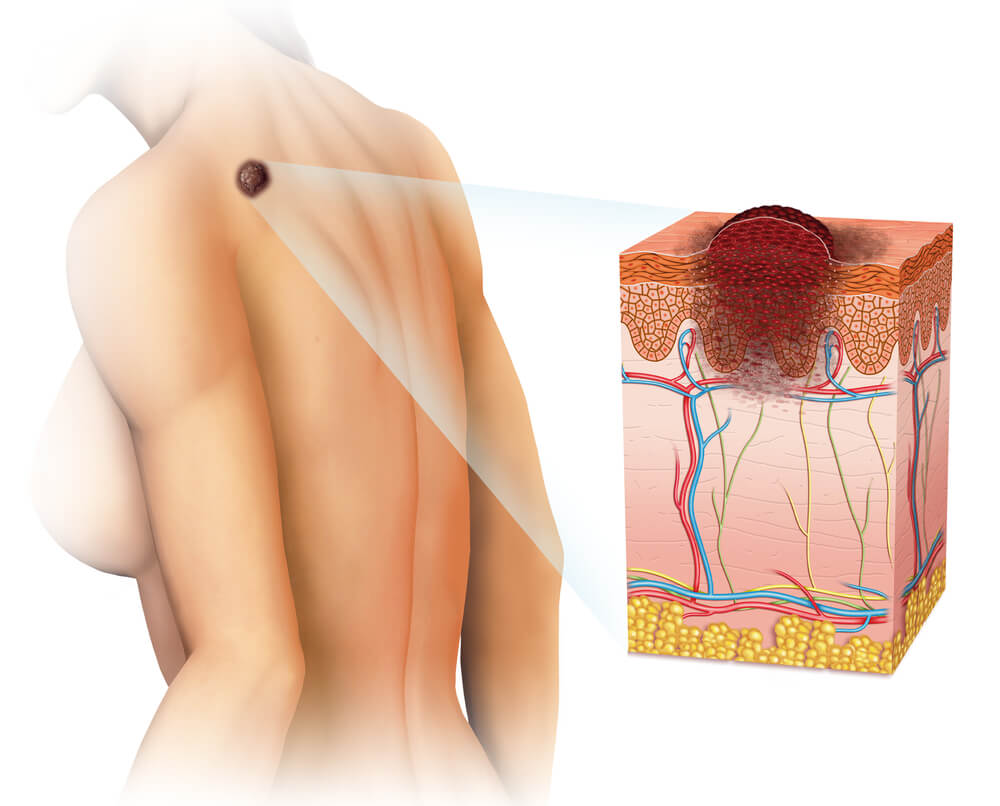According to a new study conducted at a scientific center in Philadelphia, odors coming from skin cells can be used to detect melanoma, the deadliest skin cancer. In addition to identifying a unique signature of a defined odor originating from the melanoma cells, the researchers also showed that a nanotechnology sensor can reliably differentiate between melanoma cells and healthy skin cells. The research findings point to the discovery of a new and non-invasive direction of an important method for early detection and diagnosis of melanoma in humans.

According to a new study conducted at a scientific center in Philadelphia, odors coming from skin cells can be used to detect melanoma, the deadliest skin cancer. In addition to identifying a unique signature of a defined odor originating from the melanoma cells, the researchers also showed that a nanotechnology sensor can reliably differentiate between melanoma cells and healthy skin cells. The research findings point to the discovery of a new and non-invasive direction of an important method for early detection and diagnosis of melanoma in humans.
Melanoma is a cancer that affects the melanocytes, skin cells that produce the black pigment melanin that gives the skin its unique color. This disease is responsible for almost 75% of the deaths due to skin cancer, where the survival rates are directly related to the early diagnosis of the disease. Existing detection methods rely mainly on a visual examination of the skin, a method that depends considerably on the level of self-diagnosis and medical skills of the examiner.
The current research takes advantage of the fact that the human skin produces a number of airborne chemical molecules known collectively as "volatile organic compounds" (VOC), many of which are odorous. "There is a great potential of information waiting to be discovered from testing the volatile organic compounds associated with a variety of diseases, including cancer, genetic disorders and infections originating from a virus or bacteria," explains one of the researchers.
As part of the study, published in the scientific journal Journal of Chromatography B, the researchers used a sophisticated analytical test method to identify volatile organic compounds derived from melanoma cells in three stages of the disease, as well as compounds derived from healthy melanocyte cells. These cell types were all grown in cultures. The researchers used an adsorption device to collect the chemical compounds from the air inside sealed containers that include the different types of cells. In the next step, the researchers used the methods of gas chromatography and mass spectrometry to test the compounds and identify the different patterns of the volatile organic compounds emitted from the melanoma cells compared to the healthy cells. Both the types and the concentrations of the chemical compounds were affected by this - the melanoma cells produced defined volatile organic compounds that did not exist in healthy melanocyte cells as well as other defined compounds. In addition, it was possible to differentiate between the different types of melanoma cells.
In light of the fact that the translation of these findings into the world of clinical diagnosis requires a portable and reliable sensing device, the researchers continued and examined volatile organic compounds from healthy melanocyte cells and melanoma cells with the help of an existing nanosensor. Tiny sensors consisting of carbon nanotubes coated with DNA strands can detect a wide variety of chemical targets, including odor compounds. The nanosensor was able to differentiate between the volatile organic compounds originating from healthy cells and between compounds originating from several types of melanoma cells. "We are excited to prove that the idea of vapor sensors based on DNA-coated carbon nanotubes has the potential to be used as a diagnostic tool. Our plan is to advance our research to diagnose skin cancer and other diseases," says the lead researcher.
The findings provide a proof of concept regarding the potential of the two analytical methods in identifying and locating biomarkers capable of differentiating between melanocyte cells and other types of melanoma cells. "This study demonstrates the usefulness of testing volatile organic compounds originating from various diseases for the purposes of rapid and non-invasive diagnosis," notes the lead researcher. "The method will also allow us to distinguish the different stages in the progression of the disease."
The news about the study

3 תגובות
Good consolation, dogs have been trained for this purpose for a long time... Well? When will we see her walking around the malls and the beach?
science from science but where are the applications???
The truth is that detecting cancer with the help of the sense of smell is not a new thing, years ago I saw dogs that were trained to do exactly that, and with high success rates.